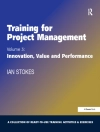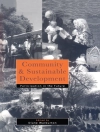55 proven tools and techniques to help team leaders and project managers improve team performance in a complex environment. The book also provides an introduction to the concept of team coaching as a distinct management activity.
قائمة المحتويات
How to use this book
SECTION ONE – The Theory
Chapter 1 – Introduction
Chapter 2 – Using tools to shape team dynamics
Chapter 3 – The emergence of the team coach
SECTION TWO – Team Coaching Techniques
Technique 1. Systemic thinking and the spheres of influence
Technique 2. Facilitating a thinking environment
Technique 3. Slow down to speed up
Technique 4. Curious enquiry
Technique 5. Influential questions
Technique 6. Listening for clues
Technique 7. Adopt an ‘Agile’ mindset
Technique 8. Using case stories
Technique 9. The importance of visual information
Technique 10. Developing your maturity in complexity
SECTION THREE – Team Coaching Tools
Chapter 4 – Tools for assessing the team’s environment
1. Is your project complex or simply complicated?
2. Assess the project environment
3. Articulating stakeholder paradoxes
4. The ‘cup of tea meeting’
5. Celebrating cultural diversity
6. Dangerous assumptions and leaps of faith
7. Roles not jobs
8. Force fi eld analysis
9. Surviving the storming stage
Chapter 5 – Tools for setting up an effective team
10. The Big ‘Why?’
11. Extrovert and introvert thinking
12. Learning from the past
13. Establishing your rules of engagement
14. Agreeing to take feedback
15. Building a future story
16. How to motivate or annoy me
17. The collaboration canvas
18. Create an awareness of behavioural gravity
19. Establish a ‘no blame’ culture
20. The Team Integration Manual
Chapter 6 – Tools for improving communication
21. Establish a collaboration and integration workstream
22. The language of collaboration
23. Building a team psychometric profile
24. Everyone speaks, everyone is heard
25. Systemic problem-solving model
26. Who plays the fool?
27. The ‘so what?’ monitor
28. Agree your meeting strategy
29. Identifying the elephant
30. Perceptual positions from the ‘extra chair’
31. Building stakeholder support
Chapter 7 – Tools for building resilience
32. Press reset
33. Taking the resilience temperature
34. Constructive challenge
35. Coping with difficult news
36. Fault free confl ict management and the ‘Evil Genius’
37. Hedges and potholes
38. The pre-mortem: An alternative approach to risk management
Chapter 8 – Tools for encouraging learning, innovation and improvement
39. The midpoint review
40. Knowledge stocktake
41. Capturing the knowledge
42. How are we performing? Team key performance indicators
43. Lifting the barriers to allow creative thinking
44. Running a successful ‘lessons learned’ session
45. Purposeful closure
SECTION FOUR – What next?
Chapter 9 – Reading list and other resources
References
How to use this book
SECTION ONE – The Theory
Chapter 1 – Introduction
Chapter 2 – Using tools to shape team dynamics
Chapter 3 – The emergence of the team coach
SECTION TWO – Team Coaching Techniques
Technique 1. Systemic thinking and the spheres of influence
Technique 2. Facilitating a thinking environment
Technique 3. Slow down to speed up
Technique 4. Curious enquiry
Technique 5. Influential questions
Technique 6. Listening for clues
Technique 7. Adopt an ‘Agile’ mindset
Technique 8. Using case stories
Technique 9. The importance of visual information
Technique 10. Developing your maturity in complexity
SECTION THREE – Team Coaching Tools
Chapter 4 – Tools for assessing the team’s environment
1. Is your project complex or simply complicated?
2. Assess the project environment
3. Articulating stakeholder paradoxes
4. The ‘cup of tea meeting’
5. Celebrating cultural diversity
6. Dangerous assumptions and leaps of faith
7. Roles not jobs
8. Force fi eld analysis
9. Surviving the storming stage
Chapter 5 – Tools for setting up an effective team
10. The Big ‘Why?’
11. Extrovert and introvert thinking
12. Learning from the past
13. Establishing your rules of engagement
14. Agreeing to take feedback
15. Building a future story
16. How to motivate or annoy me
17. The collaboration canvas
18. Create an awareness of behavioural gravity
19. Establish a ‘no blame’ culture
20. The Team Integration Manual
Chapter 6 – Tools for improving communication
21. Establish a collaboration and integration workstream
22. The language of collaboration
23. Building a team psychometric profile
24. Everyone speaks, everyone is heard
25. Systemic problem-solving model
26. Who plays the fool?
27. The ‘so what?’ monitor
28. Agree your meeting strategy
29. Identifying the elephant
30. Perceptual positions from the ‘extra chair’
31. Building stakeholder support
Chapter 7 – Tools for building resilience
32. Press reset
33. Taking the resilience temperature
34. Constructive challenge
35. Coping with difficult news
36. Fault free confl ict management and the ‘Evil Genius’
37. Hedges and potholes
38. The pre-mortem: An alternative approach to risk management
Chapter 8 – Tools for encouraging learning, innovation and improvement
39. The midpoint review
40. Knowledge stocktake
41. Capturing the knowledge
42. How are we performing? Team key performance indicators
43. Lifting the barriers to allow creative thinking
44. Running a successful ‘lessons learned’ session
45. Purposeful closure
SECTION FOUR – What next?
Chapter 9 – Reading list and other resources
References
عن المؤلف
Tony Llewellyn is a specialist in the behavioural forces that can be used to build amazing teams. He is a qualified chartered surveyor, and also has a Masters degree in Coaching and Behavioural Change. Tony primarily works as an advisor to teams working on major projects where collaboration is recognised as being critical to success.
Prior to starting out as a team specialist, Tony worked on both the client and the consultancy side of many major projects, including a senior management role in a substantial UK construction consultancy, and also as a director of a global engineering business.
His previous book, Performance Coaching for Complex Projects, was published in 2015, and he regularly contributes articles to various publications in the professional press.
Tony lectures frequently, both to students at two London Universities, as well as to individuals and groups undertaking professional development training.












